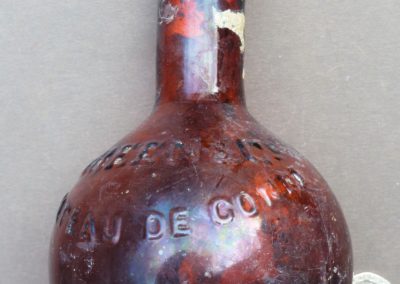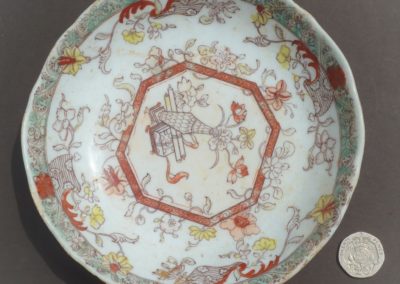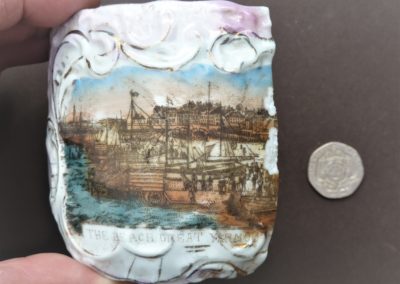Transport
Objects that travelled before use
From the 1870s, advances in the railways and shipping, coupled with improved food preservation techniques, allowed the rapid movement of products, not only through the Empire, but between Britain and its trading partners. The rise of the village store as a ubiquitous fixture was a result of this dissemination and proliferation of packaged goods. Victorian rubbish dumps reveal how products moved around the country, sometimes providing snapshots of the success of particular brands. A Bristol lemonade firm was evidently succeeding if its bottles were being discarded as far away as Norfolk. The richer the class of rubbish, the farther its reach tends to be, although it is remarkable how much produce (including beer, soft drinks, medicines and meat pastes) was made locally.
Disruption in transport links is evident too. German mineral waters and patent cures do not turn up in rubbish dumped after 1914; nor do French wine bottles and other imports – at least not in their previous quantities. Transport was also important in taking rubbish away, whether by cart, rail, canal or in the fleet of Thames Barges. Rural sites reveal poor transport links, or difficulties of transit, when they contain bottles which town dwellers typically returned to the store. At the same time, bottles and jars were more likely to be re-used in such areas since they were harder to come by and because more substances there were made at home. In this fashion, transport routes and infrastructure were variables influencing patterns of waste creation. Jam jars, honey pots and biscuit tins were kept. If the next peddler doing the rounds had run out of cream, a pot was always useful in fetching it from the dairy.













